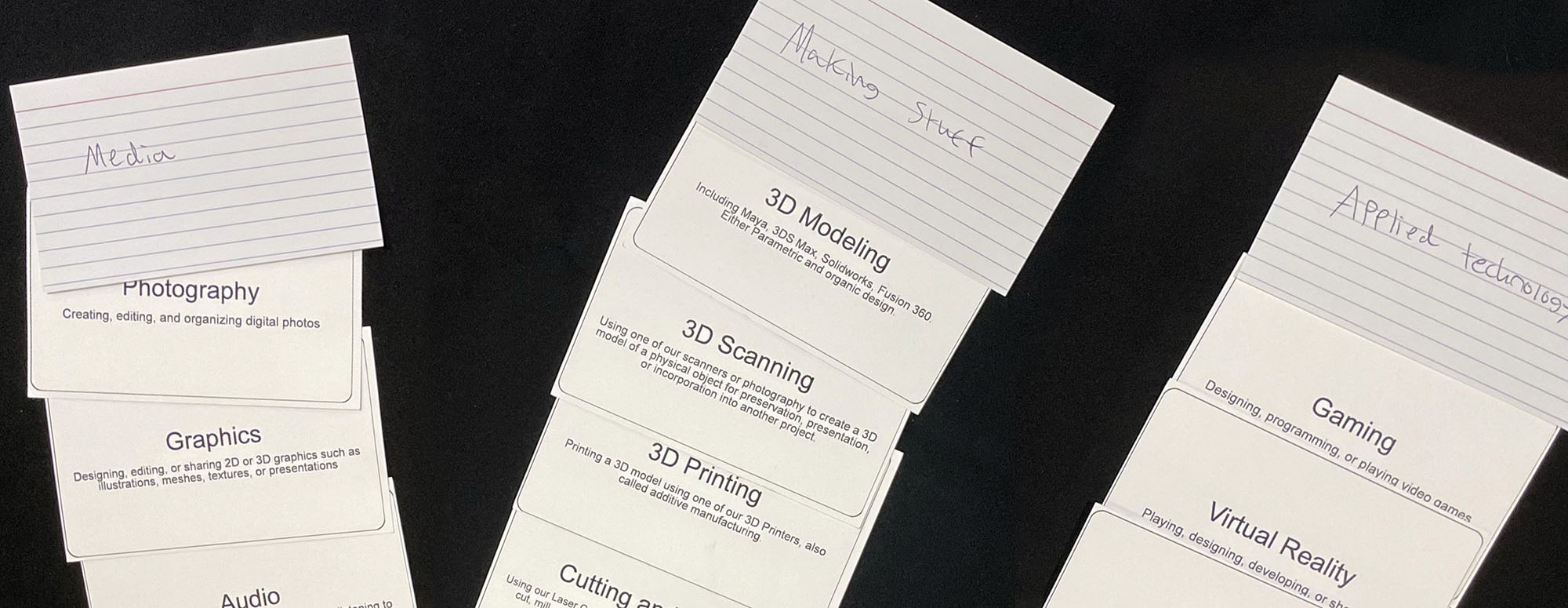Card sort for virtual reality, digital media, and “maker” activities + Tiny Café
Libraries staff gave students a set of terms we use on the website for virtual reality, digital media, and “maker” activities, watched the students categorize the terms, and gained insights for improving our information architecture in the future.

Overview
The Libraries offers a number of interrelated services and spaces for virtual reality, digital media, and “maker” activities. We present those services on our website with terms and categories chosen by staff. Our question: are there ways to categorize these services that better match a typical library user's mental models?
To answer that question, we created a card-sorting exercise—a research technique in which participants organize topics into groups, yielding insights that help researchers create an information architecture to match users' expectations (read more about card sorting on the Nielsen Norman Group's website).
We asked 15 students to sort the following cards (which came with definitions) into categories that made sense to them and to label the categories they had created:
- 3D Modeling
- 3D Printing
- 3D Scanning
- 360 Degree video
- Audio
- Augmented Reality
- Cutting & Milling
- Electronics
- Gaming
- Graphics
- Human Computer Interaction Research
- Photography
- Scanning
- Textiles
- Video
- Virtual Reality
Finding common threads among the categories they created was not easy or obvious. No participant suggested a solution more compelling than the current way we organize these activities. While no immediate consensus existed among participants, a deep analysis suggested the following four themes:
- Realia / physical / making
- Audio / video
- Virtual and augmented reality
- Graphics and 3D modeling
Recommendations
In 2022-23, Libraries staff are reconsidering the labels and taxonomy of the “user activities” we use to structure portions of our website. As we do that, we should consider the four themes above to articulate user activities that better match users’ mental models.
How We Did It
We conducted card-sorting sessions with four students via Zoom during March 2022 and in-person sessions with 11 more students on April 5, 2022 (the Nielsen Norman Group recommends 15 participants). The in-person sessions were done as a Tiny Café in the lobby of the D. H. Hill Jr. Library. We asked each participant to sort the cards listed above (3D Modeling – Virtual Reality) into categories that made sense to them.
Then we asked participants to name the categories they had created. We asked participants to “think out loud” as they sorted the cards. We took notes on what they said and photographed the end result of their labeled and sorted cards.
After completing the user studies, we compiled and analyzed the categories that participants created, along with the contents of each category. Although there was not a great deal of consistency between users in terms of the contents of each category, users were reasonably consistent with the four conceptual themes that undergirded the categories themselves, as reported above.



